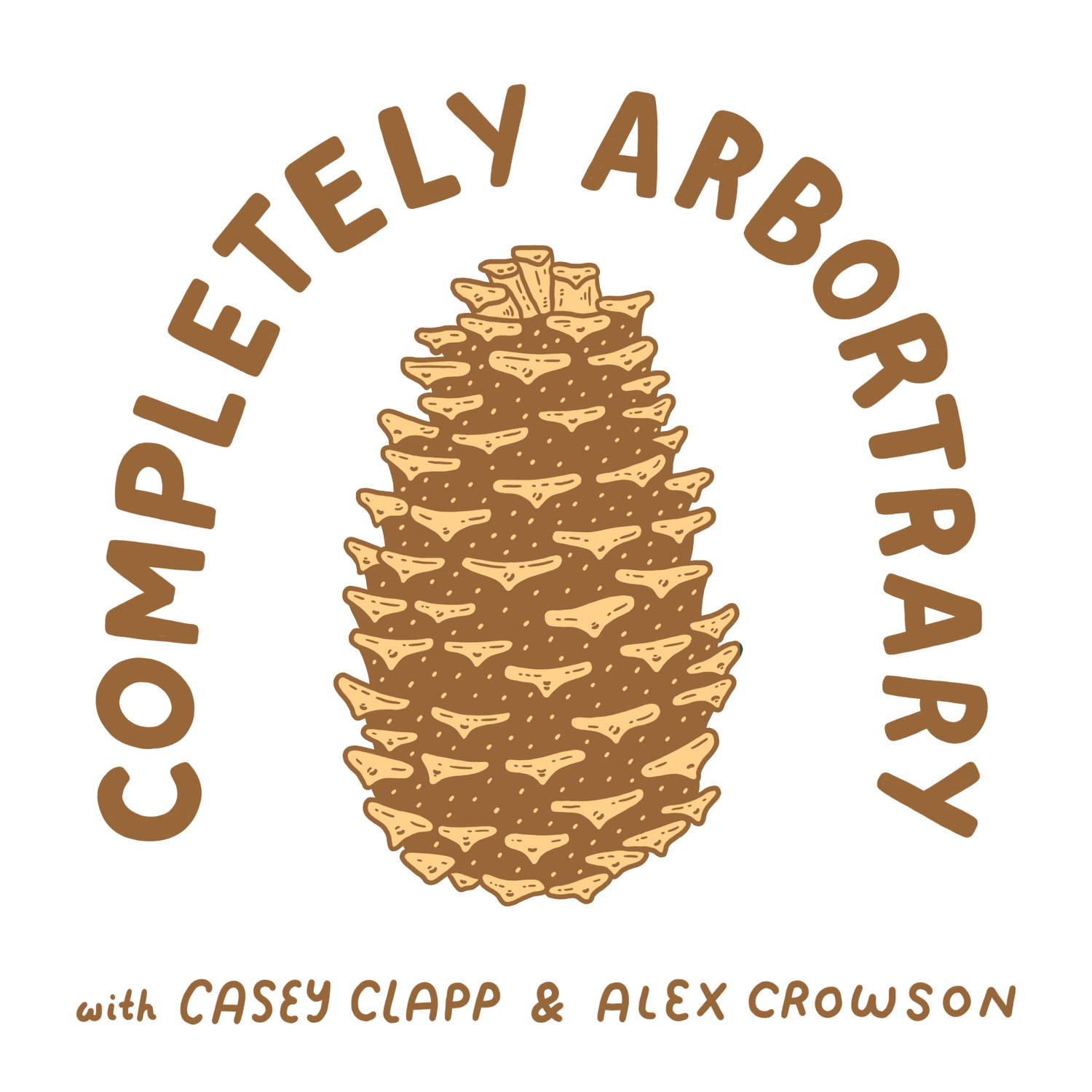BOTREEMIAN SAPSODY (KENTUCKY COFFEETREE)
Oh, Kentucky coffeetree (Gymnocladus dioica), how we love you (please love us back). A tree living out of its time that makes every effort to thwart attention and interaction, the Kentucky coffeetree may be the most curmudgeonly tree ever discussed on Completely Arbortrary. Learn about indigenous dice games, ecological anachronism, poisonous parts and scarification—this truly is a tree that hurts to know and must be hurt to grow.
Kentucky Coffeetree
(Gymnocladus dioica)
Modern times have not been kind to the coffeetree. Over the last 12,000 years or so, the Kentucky coffeetree (Gymnocladus dioica) has been relegated to the backwaters of the North American heartland. Actually, relegated isn’t the right term. Retreated may be more apt. Retreated the way someone stuck at a party, having found that in the melee of loud music and inebriation all their friends have disappeared, would slink to the sidelines where no one would pay them any mind while they sink inside themself and wonder why the good times had to end and why they were left behind.
In these modern times, the Kentucky coffeetree is out of place, and you get the sense that it knows it. You also get the sense that it doesn’t care to join these modern times, and it’s perfectly fine the way it is, thank you very much. Please go away.
To understand why this once gregarious character of the eastern deciduous forests has transformed into a silent wallflower, seemingly spurning all attempts to invite it back to the party, we must go back to when the coffeetree and all its friends were still the belles of the ball. We need to go back to when the coffeetree was among the most well-adjusted and sought out socialites of the time.
Prior to about 12,000 years ago, give or take a millennium here or there, North America was in an ice age, one of many it had experienced over the preceding several hundred thousand years. The plants and animals that were living in North America at that time were well attuned to these long-form cold snaps, and they had learned very well how to live with one another, either in agreed-upon partnership or in forced stalemate amidst their perpetual arms race of adaption and defense against that adaptation. The Kentucky coffeetree was counted in the former camp having developed a lucrative partnership with the bigwigs of the era by way of providing them with what amounted to a free lunch.
The fruit of the coffeetree is in no close way related to actual coffee. It is in fact a legume, one of those many variations of the pea pod that has found success with animals as a food source. The pod of the coffeetree is thick and leathery on the outside but is filled with a succulent pulp that surrounds several seeds that superficially resemble coffee beans. Long before these tree beans were marketed to would-be white settlers in the 1800s as a (perfectly useless) substitute for bona fide Coffea, and before they were used in a culturally cosmopolitan bowl and dice game by indigenous peoples, it was the whole pod that was desired and consumed by the dominant animals of the era: the ice age megafauna.
Ice age megafauna is a catch-all term for the extinct animals that thrived in North America before the end of the most recent ice age and the arrival of Homo sapiens. Giant sloths and cave bears, direwolves and moose, mastodons and glyptodonts, and dozens of their associated beasts roamed the forests and plains and co-evolved with the plants that grew there, including the coffeetree. The fructivorous giants among these ancient animals favored trees that met the moment by producing ever larger fruit.
Over hundreds of thousands of years of such selective eating, trees like the coffeetree and the Osage-orange (Maclura pomifera) and the honey locust (Gleditsia triocanthos) became favored producers of ice age treats. In return for putting so much energy into these bigger and better fruits, the trees got their seeds dispersed far and wide. It was a true ice age quid pro quo.
This lucrative deal was destined to trap the poor trees, though. The era they had so cleverly adapted to was swiftly coming to an untimely end, and far quicker than they were able to predict or to react to. All the ice age animals with whom they had dietary agreements disappeared one by one, and as their populations shrank, so followed the populations of the trees that served them.
Today, the Kentucky coffeetree is a lonesome tree, seldom appearing in the social circles we call modern forests, and when they do appear it’s usually just a single tree or a small grouping. All the masterful adaptations that made it so beloved in its heyday are now oddities and anachronisms that keep it on the fringes of its formal realm. The coffeetree seems to stubbornly resist embracing the changes in fashion of this new age.
At least for now. If there’s anything that is certain about fashions, it’s that they always seem to find a way to come back around.
Completely Arbortrary is produced and hosted by Casey Clapp and Alex Crowson
Support the pod and become a Treemium Member
Follow along on Instagram
Find Arbortrary merch on our store
Cover art by Jillian Barthold
Music by Aves and The Mini-Vandals
Episode cover photo by Tom Potterfield
Additional Reading:
Kentucky Coffeetree (Gymnocladus dioica)
Coffeetree Fact Sheet
Ecological Importance of Native Americans Culture to the Kentucky Coffee Tree
Exploring the Native Range of Kentucky Coffeetree
The Anachronistic Kentucky Coffee Tree

